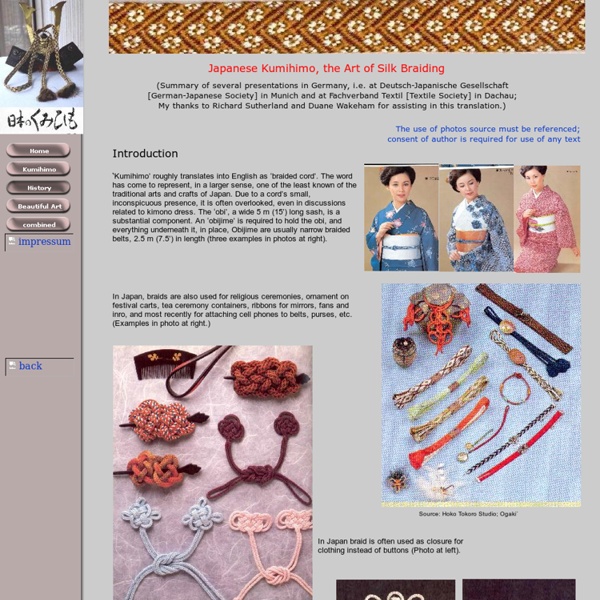History
The Monoyama period (1573 - 1614) is the beginning of the kumihimo of today. It evidenced change in kimono style with the introduction of a very wide ”obi” (sash) that required a narrow cord to hold it in place. The braided ”obijime” was created for this purpose. The style is still worn in Japan today when wearing a kimono is appropriate. Toward the end of the Edo period (1616 - 1867), the takadai, or high braiding stand, developed into its current form, one allowing for more complex, intricate patterns to be created. Edo (later named Tokyo) became the center for kumihimo. By the time of the Meiji period (1867 - 1912) samurai culture had declined and the wearing of armor was prohibited by law. Despite this, there still is a market for expensive, exclusive hand-braided products, especially for obijime.
Individual post from "Nothing In It"
While I was doing my big project earlier this year to braid all of the 16-strand braids in Jacqui Carey's "Creative Kumihimo" I noticed that most of the 8-strand braids in that book were expanded or combined into 16-strand versions, except for 8C. Now 8C is really just two 4-strand (maru yotsu) braids that link together after every three iterations. It's a great braid, currently one of my favorites, and it struck me that it should be possible to expand 8C to 16 strands, but figuring out when to do which moves was the difficulty. Anyway, I eventually sat down with pencil and paper, and I worked it out. For each X of crossing strands, first exchange the two strands marked with red arrows by moving them clockwise around the marudai. Here's what it looks like braided in four colors - Four Color Shippou It's very open, almost like lace or ply-splitting.
round,flat,flat on round design
Related:
Related:



